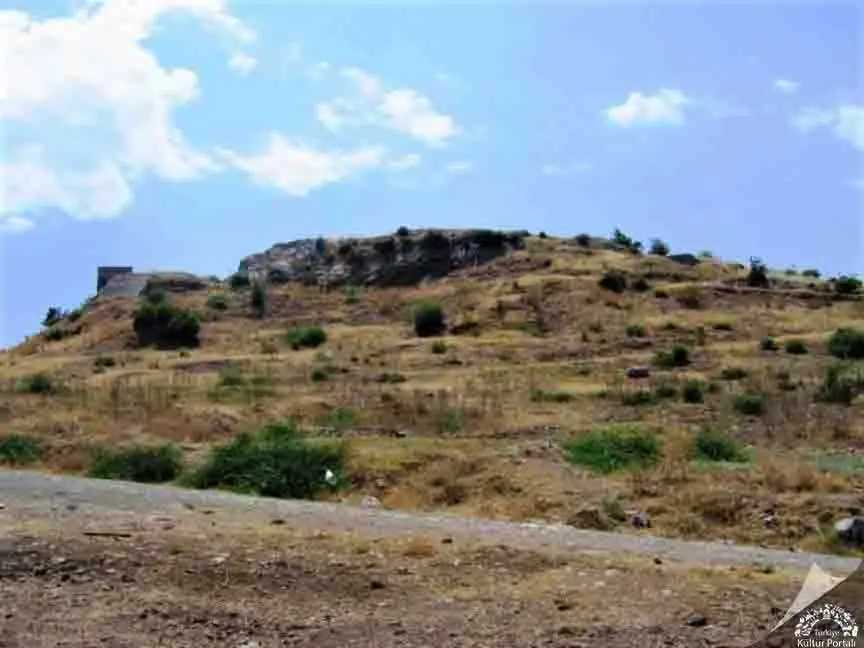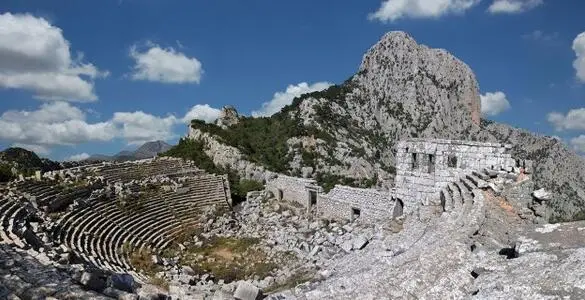Korydalla Ancient City
Description
Korydalla, now called Hacıveliler, is located one kilometer west of Kumluca district center and 29 kilometers northeast of Myra. The place name Korydalla, whose name was confirmed by a statue pedestal honored by Emperor Marcus Aurelius in Hacıveliler, is derived from the Greek word "Korydos" (lark). It was mentioned as the city of Rhodos by Hekataios of Miletus in 500 BC. Pliny places Korydalla between the cities of Rhodiapolis and Gagai, and Ptolemy shows it opposite Mount Masekitos. It is mentioned as "Coridallo" in the Tabulae Peutingeriane. It is counted among the Lycian cities of the Late Antique period by Hierocles. Korydalla was an important traffic point where the routes of Patara Stadiasmos intersected. The history of Korydalla, which has an inscription in Lycian, should be largely analyzed with Rhodiapolis. It is known that the city joined the Lycian League and was represented together with Rhodiapolis.
The spy Korydallas, who led the Persian armies in the 5th century BC, was a member of this city. Korydalla was among the thirty Lycian cities that Opramoas of Rhodiapolis helped after the earthquake of 141 AD. A temple of Leto is epigraphically documented in this city. It minted coins during the reigns of Gordian III and Tranquillina. The city continued its existence during the Roman period, but developed during the Byzantine and late Byzantine periods. The city, whose location was identified by an inscription found by Spratt and Forbes, was built on two hills and slopes.
The main artifacts that stand out in the ancient city today are the baths, the waterway, the cisterns on the Great and Small Asar Hills, rock tombs and a large mosaic structure with elaborate masonry. The waterway is located at the edge of the dirt road leading to Şeyhköy in the Kumluca district and continues along the road for about 500 meters. Six rock tombs are found on the western slope of Küçük Asar Hill, which is southwest of Büyük Asar Hill. One of the tombs has an L-shaped kline with a height of 0.80 meters. Another tomb has a two-storey kline. The other two tombs are vaulted. Although there was a theater on the southeastern slope of Küçük Asar Hill mentioned in ancient sources, there is no trace of it on the ground today. There is a rock tomb at the foot of the hill near the district and a very ruined sarcophagus carved into the rock just above it. If one climbs up the hill of Büyük Asar from the eastern side, one can find the remains of walls, which are supposed to be fortification walls, between the rocks. Very few of the stairs carved in the rock to reach the hill have been preserved until today. There are cisterns on the hill. Some of the cisterns were carved into the rock and made according to the shape of the rock and plastered. Some of them have a rectangular plan. On the eastern slope of the hill, a typical Lycian tomb was built by leveling a large rock block.The tomb in question is an example of wooden architecture. The interior of the rock tomb has three clinae. The bath is located on the plain between Büyük Asar and Küçük Asar hills. The lower floor of the bath, which is in a very dilapidated condition and a precise plan cannot be obtained, shows a hypocaust system made of bricks. The ancient city of Korydalla is also known for its gold and silver religious objects, some of which were smuggled abroad, which have a special place in the Byzantine mining art, which is known as "Kumluca Treasure" in the archaeological literature.
Short Description
Korydalla, now called Hacıveliler, is located one kilometer west of Kumluca district center and 29 kilometers northeast of Myra. The place name Korydalla, whose name was confirmed by a statue pedestal honored by Emperor Marcus Aurelius in Hacıveliler, is derived from the Greek word "Korydos" (lark). It was mentioned as the city of Rhodos by Hekataios of Miletus in 500 BC. Pliny places Korydalla between the cities of Rhodiapolis and Gagai, and Ptolemy shows it opposite Mount Masekitos. It is mentioned as "Coridallo" in the Tabulae Peutingeriane. It is counted among the Lycian cities of the Late Antique period by Hierocles. Korydalla was an important traffic point where the routes of Patara Stadiasmos intersected. The history of Korydalla, which has an inscription in Lycian, should be largely analyzed with Rhodiapolis. It is known that the city joined the Lycian League and was represented together with Rhodiapolis.





